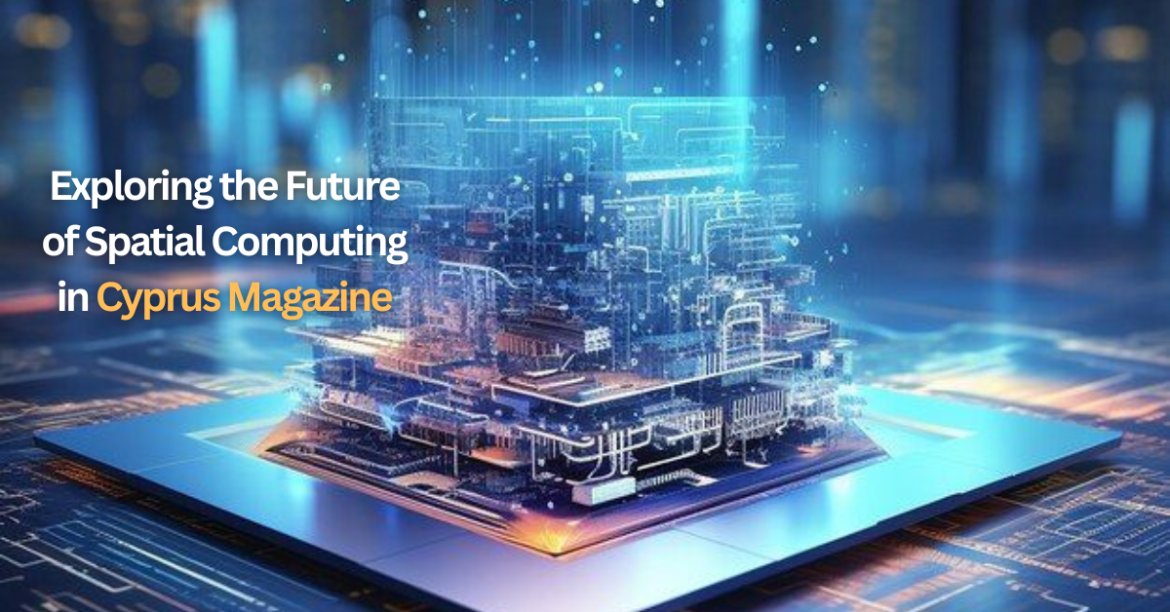At Cyprus Magazine, we strive to bring you the most insightful explorations of emerging technologies, and today we dive into the fascinating realm of spatial computing. This ground breaking field is transforming how humans interact with the digital world, weaving together augmented reality, virtual reality, and real-world environments into seamless experiences.
Spatial computing is no longer a futuristic concept—it is shaping industries, redefining education, enhancing healthcare, and even reimagining creative entertainment. By understanding its scope and potential, we can unlock opportunities that redefine how we live, work, and connect. Cyprus Magazine brings you an in-depth journey through the dynamic landscape of spatial computing.
Understanding Spatial Computing and Its Core Principles
Spatial computing is the art of blending digital information into the physical world. It builds on a foundation of extended reality, artificial intelligence, and sensor technologies. Instead of being confined to screens, data can be accessed, manipulated, and experienced in real-time environments. Imagine walking through a city where directions appear as floating arrows or classrooms where students explore three-dimensional worlds without leaving their seats.
The Evolution of Human Interaction with Technology
Technology has always been about reducing friction between humans and information. From the typewriter to smartphones, every step has aimed to make communication faster and more intuitive. Spatial computing represents the next stage in this evolution. With intuitive gestures, eye movements, and even voice commands, we are moving beyond keyboards and touchscreens to a more natural and immersive way of engaging with data.
Key Components Driving Spatial Computing
Spatial computing relies on several core technologies:
- Augmented Reality: Overlays digital information onto physical spaces.
- Virtual Reality: Immerses users in fully digital environments.
- Mixed Reality: Seamlessly combines both digital and real-world elements.
- Artificial Intelligence: Powers intuitive responses and predictive behaviors.
- IoT Sensors: Gather data to synchronize environments with real-time actions.
Each element contributes to creating immersive and responsive experiences that reshape industries.
Transforming Education with Immersive Learning
Virtual Classrooms Beyond Borders
Spatial computing is breaking down barriers in education. Students no longer need to rely solely on textbooks. Virtual classrooms allow learners to step into historical events, explore scientific concepts through holographic simulations, and collaborate with peers worldwide. Cyprus Magazine highlights how universities and schools in Cyprus are exploring these innovations to create more engaging and impactful learning experiences.
Empowering Teachers with Interactive Tools
Teachers can now access powerful interactive platforms that track student engagement in real time. They can design lessons where abstract ideas become tangible, ensuring students grasp complex subjects through practical demonstration rather than theory alone.
Revolutionizing Healthcare Through Spatial Solutions
Surgical Precision with Augmented Reality
Spatial computing is reshaping healthcare by providing surgeons with advanced visualization tools. During operations, digital overlays guide doctors with precision, improving outcomes and reducing risks.
Patient Care and Rehabilitation
Patients can benefit from immersive rehabilitation programs where physical therapy becomes interactive and engaging. For example, virtual scenarios encourage patients to perform exercises that improve recovery, while doctors monitor progress remotely.
Enhancing Business and Workplace Collaboration
Remote Collaboration in Shared Spaces
Businesses are adopting spatial computing to create shared digital environments where employees across the globe collaborate as if they were in the same room. Meetings are no longer confined to video calls but involve interactive whiteboards, holographic presentations, and real-time brainstorming.
Customer Engagement and Immersive Shopping
Retailers are transforming shopping experiences by allowing customers to try products virtually. Imagine furnishing a room by placing virtual furniture or trying clothes in a digital mirror before purchase.
Entertainment and Creative Arts Reimagined
Immersive Gaming Experiences
Gaming has always pushed the limits of technology, and spatial computing is the latest frontier. Players can now step into hyper-realistic environments, interact with lifelike avatars, and experience narratives in a way that blurs the line between the digital and physical world.
New Horizons in Creative Expression
Artists and performers are leveraging spatial computing to create interactive exhibitions, virtual concerts, and dynamic art forms that transform how audiences engage with creativity.
Challenges and Ethical Considerations
Despite its promise, spatial computing brings challenges. Issues like data privacy, digital addiction, and accessibility must be addressed. Companies must build systems that respect user autonomy while governments establish regulations to ensure fair use. Ethical design will be crucial to ensure the technology serves humanity positively.
Future Prospects of Spatial Computing
Looking ahead, spatial computing is set to redefine not only industries but everyday life. From smart cities to personalized healthcare, the technology holds limitless potential. Cyprus Magazine emphasizes that embracing spatial computing today will prepare societies for a more connected, efficient, and imaginative future.
Frequently Asked Questions
What is spatial computing in simple terms?
Spatial computing is the integration of digital information into real-world environments, allowing people to interact with data in natural and immersive ways.
How does spatial computing impact education?
It enhances learning by providing immersive experiences such as virtual classrooms, interactive simulations, and global collaboration opportunities.
Can spatial computing be used in daily life?
Yes, from navigation apps that overlay directions on streets to smart home systems that respond intuitively, spatial computing is entering everyday activities.
What industries benefit the most from spatial computing?
Education, healthcare, retail, entertainment, and corporate sectors are currently leading adopters, though the potential extends to nearly every industry.
What are the main challenges of spatial computing?
Challenges include ensuring data privacy, ethical design, accessibility, and preventing over-dependence on digital systems.
Conclusion
Spatial computing is more than a technological trend—it is a transformation that will shape the way humans interact with the world for generations to come. At Cyprus Magazine, we believe in showcasing innovations that inspire curiosity, empower industries, and open new horizons. By understanding spatial computing, we not only glimpse the future but actively participate in shaping it.



